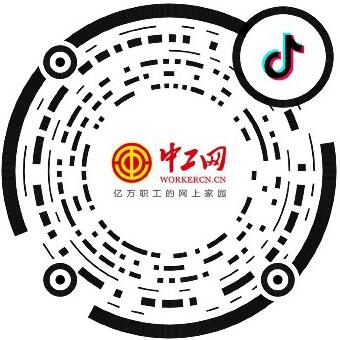Zhu Jieying, reporter of China Industrial Network
"Architecture itself is interdisciplinary, one part of which is culture and art, and the other part is science and technology engineering, which is a superposition of science and art." Recently, Ni Yang, a researcher of the Architectural Design and Research Institute of South China University of Technology Co., Ltd. and a national science and technology innovation master, talked about his architectural innovation concept to the reporter of China Industrial Network.
In 1981, Ni Yang was admitted to the Department of Architecture of South China Institute of Technology (later known as South China University of Technology). He has successively learned from three academicians, She Xinan, Mo Bozhi and He Jingtang, who are masters of Lingnan architecture, and has become the contemporary successor of Lingnan architecture school.

The picture shows Ni Yang. Photograph provided by respondents
The Lingnan School of Architecture is an indispensable part of China's architecture industry. Talents have come forth in large numbers. For example, Mr. Xia Changshi, who was the first to combine Lingnan climate adaptability with modern architecture, followed by Academicians She Wenan and Mo Bozhi, who integrated Lingnan traditional garden space into modern architecture, and Academician He Jingtang, who proposed a cultural creation system of "two views and three natures".
On the basis of the research of teachers, Ni Yang also went to Harvard to visit and study. In combination with international advanced ideas, he created a new Lingnan architecture "related design" system from theory, method to technology in long-term practice, aiming at the transformation of contemporary Lingnan architecture science problems.

Ni Yang (second from the right) is discussing the design scheme with his colleagues. Photograph provided by respondents
When it comes to this design system, Ni Yang's chatterbox opens.
The "associated design" system refers to the overall association, systematic association and multi-dimensional association between architecture and "people, place and time", and advocates exploring the internal generation logic of architecture. "'People' is the core value of architecture, including collective people and individual people. What kind of activity patterns do people produce in architecture? What's the order? What's the perceptual experience? These are all related to people." Ni Yang said, "'Land' includes the site and climate, such as topography, urban structure, climate conditions, etc. The ground is the foundation on which the building depends. The design results will be different if the foundation is different. ”And "time" is the development connotation of architecture: diachrony such as "yesterday, today and tomorrow", and synchronicity of juxtaposition and interweaving of era technology and cultural background in the same design, all of which require architects to "respect history, base on the present, and have a future in mind".
The "associated design" method and technology system is Ni Yang's response to the national dual carbon strategy, aiming at the contemporary Lingnan architectural climate science issues, including the architectural design leader, the system design method of full cycle collaboration of all disciplines, and the key technology of active passive coupling of low-carbon climate.
Ni Yang said that the carbon emissions in the whole process of buildings accounted for about 50% of the total global carbon emissions, and the energy consumption of air conditioners accounted for about 50% of the building energy consumption. It can be seen that in the context of contemporary global warming and energy crisis, the issue of building low-carbon climate is becoming increasingly important. The system gradually matured when Ni Yang presided over the national key research and development program of the "13th Five Year Plan", and the results were applied to a number of national projects with significant influence and super large complex projects, resulting in good economic, social and ecological benefits.
Based on the "associated design", Ni Yang participated in the design of the expansion project of the Memorial Hall of the Victims of the Nanjing Massacre of the Japanese Invaders in 2005 and won the gold medal of the National Excellent Engineering Survey and Design. Through design strategies such as semi buried exhibition hall and shape coefficient control, the project couples building form with function and climate, saves land and energy, and realizes green and efficient construction.
Ni Yang also based on the national dual carbon strategy, proposed the core goal of architecture - high-quality living environment+green low-carbon sustainability, and the achievements were applied to national projects and super large complex projects with great influence.
Ni Yang's design exploration of high-quality and low-carbon buildings has been quite in-depth since he co hosted the design of the China Pavilion at the 2010 Shanghai World Expo with Academician He Jingtang. This magnificent red bucket shaped building presents the beauty of Chinese architecture to the world with the beautiful implication of "the crown of the East, the prosperity of China; the granary of the world, the prosperity of the people", and adopts green low-carbon technologies such as self shading system, ice cooling technology, photovoltaic technology in the design.

The China Pavilion behind Ni Yang (second from right) is under construction. Photograph provided by respondents
"The shape of the China Pavilion is the tripod of China, which means" prosperous China ". The structure of the pavilion is out of the self shading system, which is very energy-efficient." Ni Yang told CAMCE. "Below the China Pavilion is the city square, through which the wind passes, and it is particularly friendly to the environment."
This building with both cultural connotation and low-carbon design has won the first prize of the National Excellent Engineering Survey and Design Industry and the Excellence Award of the Asian Association of Architects.
Ni Yang also devoted himself to talent cultivation and concept inheritance. He has stuck to the front line of teaching for more than 30 years, cultivated 85 master and doctoral graduates, 3 provincial and municipal masters, 5 young architects, and won the first "National Outstanding Engineer Team" and "National University Huang Danian style Teacher Team". Some of the students have served as senior executives of domestic and foreign architectural design companies and teaching backbones of architectural disciplines in colleges and universities, becoming young leading talents in the field of architecture.
In addition, under the influence of the older generation of architects, Ni Yang actively participated in the national poverty alleviation campaign to support the public welfare construction of Liupanshui Ethnic Middle School in Guizhou mountainous areas; Presided over the renovation project of Longgui Village Revitalization School in Shaoguan Mountain Area, northern Guangdong; Participated in the assistance work of Yunxian County, the counterpart of South China University of Technology to the poverty alleviation county in Yunnan Province, supported the design of the "Three Pavilions in One" project in Yunxian County and the planning and design project of the new campus of Pu'er University for free, and participated in the technical assistance work of the "Ten Million Project".
In his more than 30 years of career, Ni Yang has shouldered many responsibilities, such as design practice, scientific research, and educational dedication, lighting up a new path of low-carbon adaptation of buildings with "related design", and boosting the high-quality development of China's urban construction and architectural discipline industry.

















